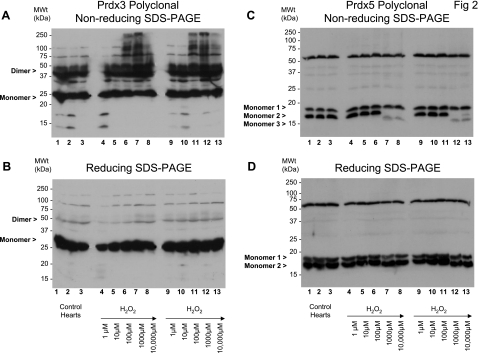Fig. 2.
Effect of hydrogen peroxide on cardiac Prdx3 and Prdx5. Nonreduced (A and C) and reduced (B and D) immunoblots of whole rat cardiac extracts were probed with polyclonal antibodies that detect Prdx3 and Prdx5 from hearts treated in duplicate. Hydrogen peroxide induces formation of a succession (∼75, 100, and >250 kDa) of disulfide-dependent species (A, lanes 6–8 and 11–13). These species are readily reducible (B, lanes 6–8 and 11–13). Under basal conditions, Prdx5 forms 2 monomer species, although an increase in hydrogen peroxide concentration causes disappearance of monomer 2 and emergence of a smaller species, monomer 3, but only under nonreducing conditions (cf. C, lanes 7 and 8 and lanes 12 and 13, with D, lanes 7 and 8 and lanes 12 and 13).

